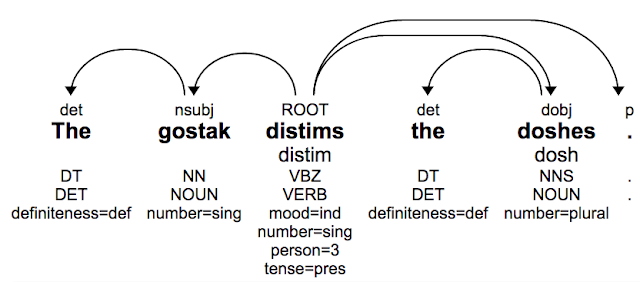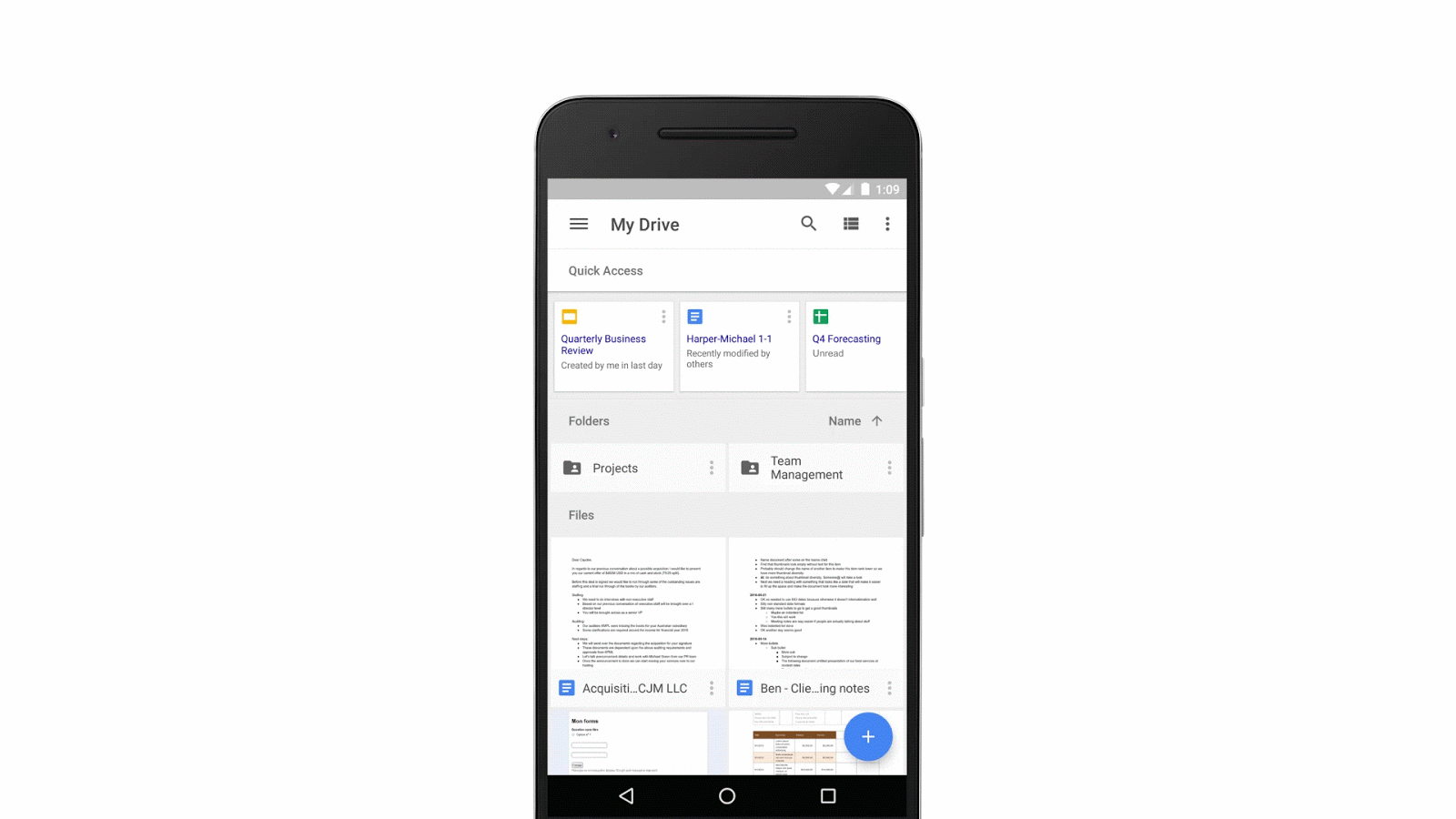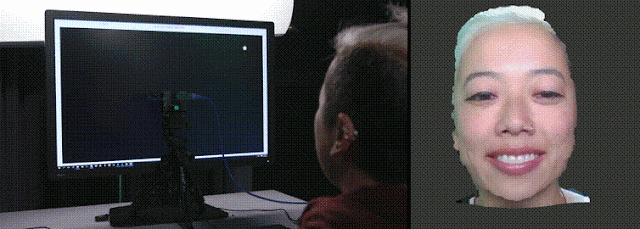Posted by David Weiss and Slav Petrov, Research ScientistsAt Google, we continuously improve the language understanding capabilities used in applications ranging from
generation of email responses to
translation. Last summer, we open-sourced
SyntaxNet, a neural-network framework for analyzing and understanding the grammatical structure of sentences. Included in our release was
Parsey McParseface, a state-of-the-art model that we had trained for analyzing English, followed quickly by a collection of pre-trained models for 40 additional languages, which we dubbed
Parsey's Cousins. While we were excited to share our research and to provide these resources to the broader community, building machine learning systems that work well for languages other than English remains an ongoing challenge. We are excited to announce a few new research resources, available now, that address this problem.
SyntaxNet UpgradeWe are releasing a
major upgrade to SyntaxNet. This upgrade incorporates nearly a year’s worth of our research on multilingual language understanding, and is available to anyone interested in building systems for processing and understanding text. At the core of the upgrade is a
new technology that enables learning of richly layered representations of input sentences. More specifically, the upgrade extends
TensorFlow to allow joint modeling of multiple levels of linguistic structure, and to allow neural-network architectures to be created dynamically during processing of a sentence or document.
Our upgrade makes it, for example, easy to build
character-based models that learn to compose individual characters into words (e.g. ‘c-a-t’ spells ‘cat’). By doing so, the models can learn that words can be related to each other because they share common parts (e.g. ‘cats’ is the plural of ‘cat’ and shares the same stem; ‘wildcat’ is a type of ‘cat’). Parsey and Parsey’s Cousins, on the other hand, operated over sequences of words. As a result, they were forced to memorize words seen during training and relied mostly on the context to determine the grammatical function of previously unseen words.
As an example, consider the following (meaningless but grammatically correct) sentence:
This sentence was
originally coined by Andrew Ingraham who explained: “You do not know what this means; nor do I. But if we assume that it is English, we know that the
doshes are
distimmed by the
gostak. We know too that one
distimmer of
doshes is a
gostak." Systematic patterns in
morphology and
syntax allow us to guess the grammatical function of words even when they are completely novel: we understand that ‘doshes’ is the plural of the noun ‘dosh’ (similar to the ‘cats’ example above) or that ‘distim’ is the third person singular of the verb distim. Based on this analysis we can then derive the overall structure of this sentence even though we have never seen the words before.
ParseySaurusTo showcase the new capabilities provided by our upgrade to SyntaxNet, we are releasing a set of new pretrained models called
ParseySaurus. These models use the character-based input representation mentioned above and are thus much better at predicting the meaning of new words based both on their spelling and how they are used in context. The ParseySaurus models are far more accurate than
Parsey’s Cousins (reducing errors by as much as 25%), particularly for
morphologically-rich languages like Russian, or
agglutinative languages like Turkish and Hungarian. In those languages there can be dozens of forms for each word and many of these forms might never be observed during training - even in a very large corpus.
Consider the following fictitious Russian
sentence, where again the stems are meaningless, but the suffixes define an unambiguous interpretation of the sentence structure:
Even though our Russian ParseySaurus model has never seen these words, it can correctly analyze the sentence by inspecting the character sequences which constitute each word. In doing so, the system can determine many properties of the words (notice how many more morphological features there are here than in the English example). To see the sentence as ParseySaurus does, here is a visualization of how the model analyzes this sentence:
Each square represents one node in the neural network graph, and lines show the connections between them. The left-side “tail” of the graph shows the model consuming the input as one long string of characters. These are intermittently passed to the right side, where the rich web of connections shows the model composing words into phrases and producing a syntactic parse. Check out the full-size rendering
here.
A CompetitionYou might be wondering whether character-based modeling are all we need or whether there are other techniques that might be important. SyntaxNet has lots more to offer, like
beam search and different training objectives, but there are of course also many other possibilities. To find out what works well in practice, we are helping co-organize a
multilingual parsing competition at this year’s
Conference on Computational Natural Language Learning (CoNLL) with the goal of building syntactic parsing systems that work well in real-world settings and for 45 different languages.
The competition is made possible by the
Universal Dependencies (UD) initiative, whose goal is to develop cross-linguistically consistent treebanks. Because machine learned models can only be as good as the data that they have access to, we have been contributing data to UD
since 2013. For the competition, we partnered with UD and
DFKI to build a new multilingual evaluation set consisting of 1000 sentences that have been translated into 20+ different languages and annotated by linguists with parse trees. This evaluation set is the first of its kind (in the past, each language had its own independent evaluation set) and will enable more consistent cross-lingual comparisons. Because the sentences have the same meaning and have been annotated according to the same guidelines, we will be able to get closer to answering the question of which languages might be harder to parse.
We hope that the upgraded SyntaxNet framework and our the pre-trained ParseySaurus models will inspire researchers to participate in the competition. We have additionally created a
tutorial showing how to load a
Docker image and train models on the
Google Cloud Platform, to facilitate participation by smaller teams with limited resources. So, if you have an idea for making your own models with the SyntaxNet framework,
sign up to compete! We believe that the configurations that we are releasing are a good place to start, but we look forward to seeing how participants will be able to extend and improve these models or perhaps create better ones!
Thanks to everyone involved who made this competition happen, including our collaborators at
UD-Pipe, who provide another baseline implementation to make it easy to enter the competition. Happy parsing from the main developers, Chris Alberti, Daniel Andor, Ivan Bogatyy, Mark Omernick, Zora Tung and Ji Ma!


















